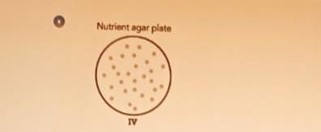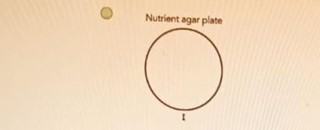Escherichia coli is plated on nutrient agar plates that each contain a different type of antibiotic. The shaded area represents the growth of the bacteria. Which of the following plates contains bacteria that were most resistant to the antibiotic?
A.

B.

C.

D.

A
B
C
D
Correct Answer : B
The correct answer is choice B. This is the plate that represents the highest number of bacteria. The bacteria that grow on this plate are the most resistant to the antibiotic because they can survive in a high concentration of the substance. In the other plates, the antibiotic inhibits the growth of the bacteria to a greater or lesser extent, depending on their sensitivity.
TEAS 7 Exam Quiz Bank
HESI A2 Exam Quiz Bank
Find More Questions 📚
Teas 7 Questions: We got the latest updated TEAS 7 questions
100% Money Refund: 100% money back guarantee if you take our full
assessment pass with 80% and fail the actual exam.
Live Tutoring: Fully customized live tutoring lessons.
Guaranteed A Grade: All students who use our services pass with 90%
guarantee.
Related Questions
Correct Answer is B
Explanation
The pharynx is primarily composed of muscle tissue. It plays a role in swallowing and is part of both the respiratory and digestive systems, which requires coordinated muscular activity.
Correct Answer is B
Explanation
The correct answer is B. Parathyroid hormone (PTH) regulates blood calcium levels by stimulating the release of calcium from bones, reabsorption of calcium in the kidneys, and absorption of calcium in the intestines. Norepinephrine, growth hormone, and melatonin do not play a primary role in calcium regulation.
Correct Answer is C
Explanation
When a proton is emitted from the nucleus of an atom, the atomic number (Z) decreases by 1 because a proton has a positive charge, and it's effectively removing one positive charge from the nucleus. However, the atomic mass (A) remains the same because protons and neutrons contribute to the atomic mass, and the emission of a proton does not affect the number of neutrons.
Correct Answer is A
Explanation
The correct answer is A. The endocardium is the innermost layer of tissue that lines the interior surfaces of the heart, providing a smooth surface for blood flow. The myocardium is the middle muscular layer, the pericardium is the outer protective sac, and the epicardium is the outermost layer covering the heart.
Correct Answer is C
Explanation
The correct answer is C. 9. The pH is determined by taking the negative logarithm (base 10) of the hydrogen ion concentration ([H+]). In this case, -log(10^(-9)) equals 9, so the pH of the solution is 9.
To find the pH of a solution with a hydrogen ion concentration ([H+]) of \(10^{-9}\) M using the equation \(pH = -\log[H^+]\):
\[ pH = -\log(10^{-9}) \]
Now, since \( \log(10^{-9}) = -9 \), the negative sign before the logarithm makes the value positive:
\[ pH = -(-9) = 9 \]
Therefore, the solution has a pH of 9
Correct Answer is A
Explanation
The hip bone (or pelvis) in adults is formed by the fusion of three separate bones: the ilium, ischium, and pubis. This fusion occurs during adolescence and results in a single, solid structure.
Correct Answer is D
Explanation
The correct answer is D. The scientific purpose would be to analyze the factors that led to the failure of the 1924 expedition, providing insights into mountaineering challenges and safety considerations, rather than demonstrating modern technology or exploring new routes.
Correct Answer is D
Explanation
The correct answer is D. The typical pathway of blood flow involves arteries branching into arterioles, which further branch into capillaries, facilitating the exchange of nutrients and gases with the organ's tissues.
Correct Answer is C
Explanation
The correct answer is C. The complementary strand of DNA will have bases that pair with the original strand according to the base-pairing rules. In DNA, adenine (A) pairs with thymine (T), and guanine (G) pairs with cytosine (C). Therefore, the complementary strand reads 3’ TCGATCGCA5’.
Correct Answer is C
Explanation
The correct answer is C. The renal vein is responsible for draining oxygen-depleted blood from the kidneys. After the kidneys filter waste and excess substances from the blood, the deoxygenated blood is carried away from the kidneys by the renal vein
This question was extracted from the actual TEAS Exam. Ace your TEAS exam with the actual TEAS 7 questions, Start your journey with us today
Visit Naxlex, the Most Trusted TEAS TEST Platform With Guaranteed Pass of 90%.
Money back guarantee if you use our service and fail the actual exam. Option of personalised live tutor on your area of weakness.
